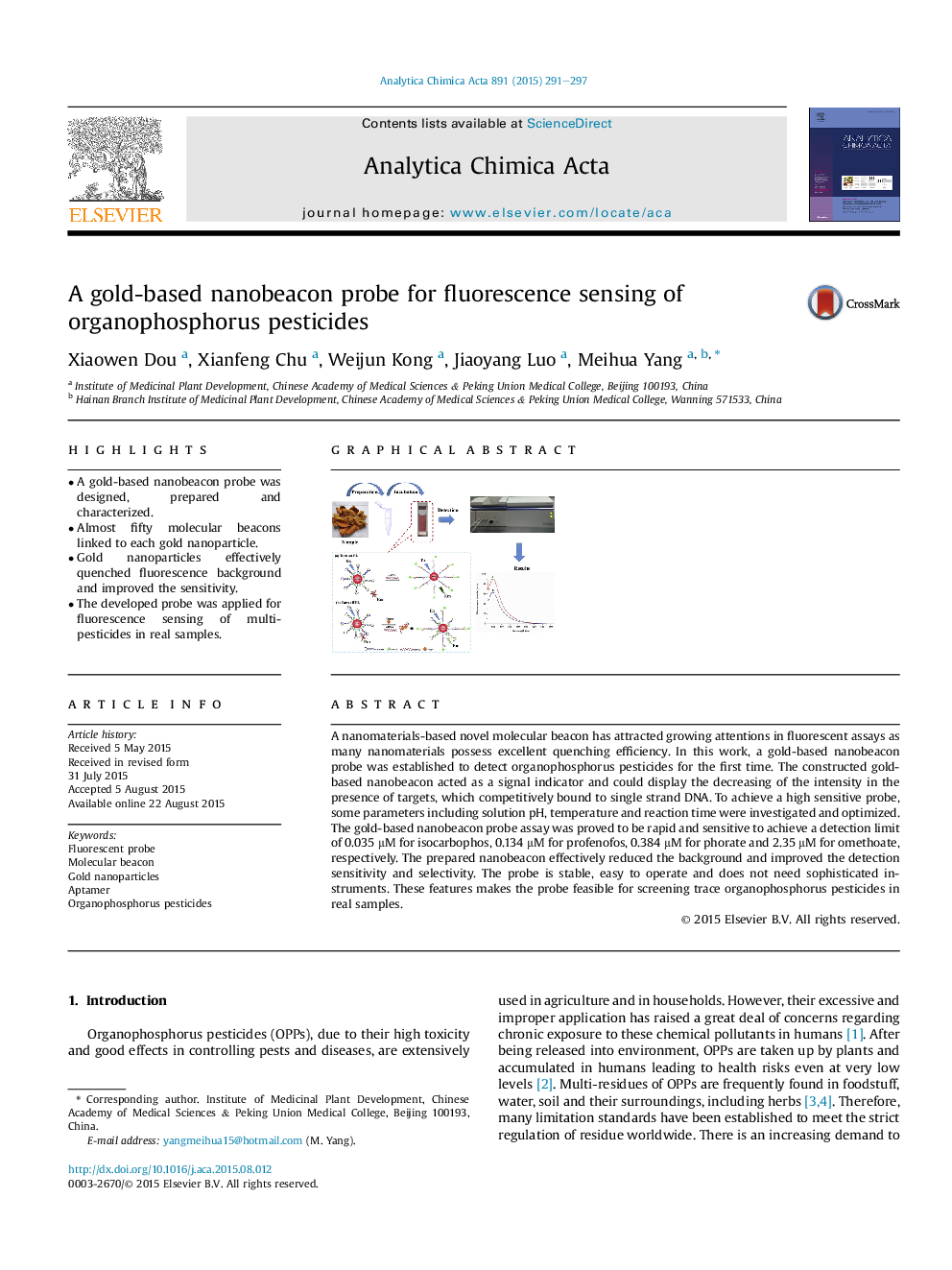| Article ID | Journal | Published Year | Pages | File Type |
|---|---|---|---|---|
| 1163409 | Analytica Chimica Acta | 2015 | 7 Pages |
•A gold-based nanobeacon probe was designed, prepared and characterized.•Almost fifty molecular beacons linked to each gold nanoparticle.•Gold nanoparticles effectively quenched fluorescence background and improved the sensitivity.•The developed probe was applied for fluorescence sensing of multi-pesticides in real samples.
A nanomaterials-based novel molecular beacon has attracted growing attentions in fluorescent assays as many nanomaterials possess excellent quenching efficiency. In this work, a gold-based nanobeacon probe was established to detect organophosphorus pesticides for the first time. The constructed gold-based nanobeacon acted as a signal indicator and could display the decreasing of the intensity in the presence of targets, which competitively bound to single strand DNA. To achieve a high sensitive probe, some parameters including solution pH, temperature and reaction time were investigated and optimized. The gold-based nanobeacon probe assay was proved to be rapid and sensitive to achieve a detection limit of 0.035 μM for isocarbophos, 0.134 μM for profenofos, 0.384 μM for phorate and 2.35 μM for omethoate, respectively. The prepared nanobeacon effectively reduced the background and improved the detection sensitivity and selectivity. The probe is stable, easy to operate and does not need sophisticated instruments. These features makes the probe feasible for screening trace organophosphorus pesticides in real samples.
Graphical abstractFigure optionsDownload full-size imageDownload as PowerPoint slide
